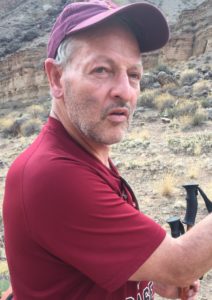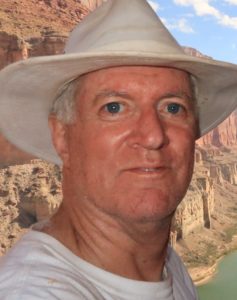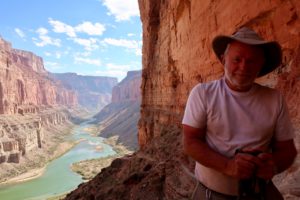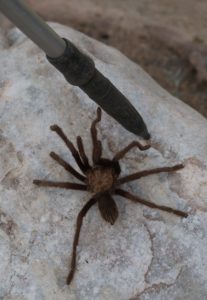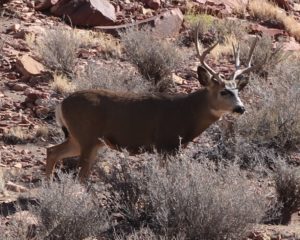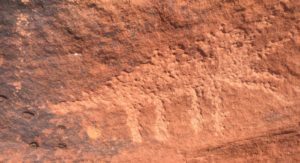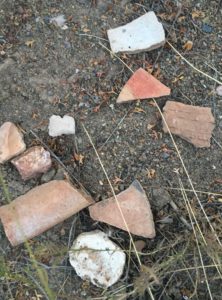The weather was perfect for our Nankoweap Trail hike: cool at night, not too hot during the day. A little windy one day, a couple of drops rain, literally, on another day. And that was it. We were lucky.
[If it had rained on the day we were going to hike out, I wouldn’t have. A narrow and muddy trail? No way.]
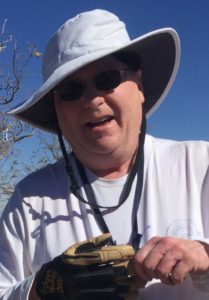
Canyon John Laneve planned the whole thing and got the permits we needed from the National Park Service. He said we would hike eight miles and descend 4,240 feet from the Grand Canyon National Park boundary to Nankoweap Creek on Day One and hike out on Day Six and that’s what we did. [That left us a day on either end to hike from the rim, where we left our cars, to the park boundary and back to the rim.] The other four days we camped by the creek and day-hiked, including an easy three-mile stroll down to the Colorado River and back, to the Anasazi granaries. Until this trip I had never camped two nights in a row in the same place. I liked that. I needed it, too.
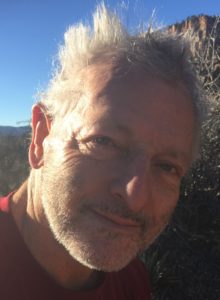
David McDonald was the strongest of the five hikers in our group and he got to the Nankoweap Creek first, right at dark. Because he had often waited for me, I wasn’t far behind. I hadn’t known how much further we had to go, it was getting dark, and I was getting anxious — I was out of water, both of us were. And then I heard it, what a sweet sound, water rushing headlong down Nankoweap.
We didn’t know what had happened to David’s brother, Jim, whose trail name is now Nine!; or Lenny Frye; or our leader, Canyon John. Maybe they had decided to stop and camp. Or maybe they had switched on their headlamps and were still on the trail, coming down the last steep, slippery section covered with crushed shale and scree.
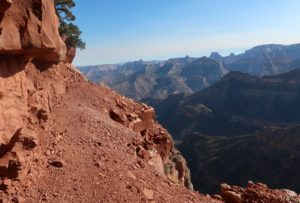
We knew Jim had fallen and we knew they might be in need of water, as we had been, but I was too beat up, mentally and physically, to go back for them in the dark. That would have to wait for morning.
The “Rescue”
We had seen no one on the way down, but when David and I got to the creek we had company. There were 10 people camped there, a Grand Canyon Association Field Institute hike led by a woman named Christa Sadler.
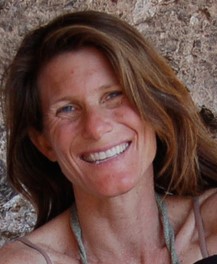
David told her that his brother and two other men were still out on the trail somewhere and Sadler, bless her, said she and one of the men in her party who was experienced in search and rescue would go looking for them — and take them water. David offered to go with them, but she said he would just slow them down. Sadler found them on the trail a mile or so out, head lamps on, headed for Nankoweap Creek.
What Sadler did was a good thing, but Canyon John was not pleased. He told me later that he had rationed his water, had two ounces left, and didn’t need rescuing.
“We’re coming down and I see the two lights pop up from the creek,” Canyon John said. “I think it’s you and David. I kept saying, ‘Why are they coming toward us?'” But it wasn’t David and me, it was the search and rescue fellow and Sadler, a woman John had read about and whose name he recognized.
[“Christa Sadler is a geologist, educator, wilderness guide and writer with a serious addiction to rivers, deserts and mountains,” according to the National Geographic Expedition web site.]
Jim was more generous.
“Lenny and I needed water,” he said. “We would have made it, but we would have been miserable.”
But, Jim said, “’assisted’ is a better word than ‘rescued.’”
The cliff
David knew that his brother had fallen once, and he had been worried about him. What he didn’t know was that Jim had fallen again, off a cliff he was trying to climb down without taking off his backpack.
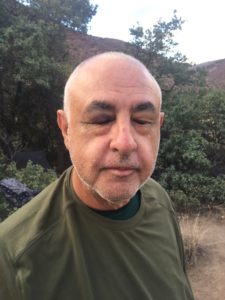
The first fall was just bad luck, or good luck, depending on how you look at it. The edge of a narrow section of trail gave way and down the slope he went, 10 or 15 feet, Canyon John said. The fall skinned him up some and gave him a black eye – he must have banged his head against something – but he got back up.
Jim said the trail had “crumbled” under his boot. He was lucky. The spot where the trail crumbled could just as easily have been next to a cliff.
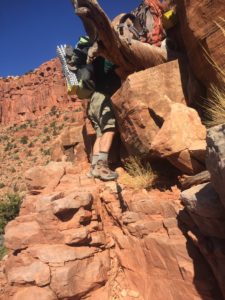
The second fall, off a cliff he was trying to climb down, was his bad. This was Jim’s sixth overnight trip into the canyon and his second hike down the Nankoweap Trail and he told me he was “shocked” at how comfortable he felt.
“That’s why I fell; I was too comfortable. I was careless. I’m very, very lucky I’m not dead.”
Jim got up again, bruised, but all in one piece. He had prepared for the Nankoweap by hiking Piestewa Peak, which he can see from the backyard of his home in Phoenix, and he thinks that’s why he wasn’t injured: “You don’t walk away from that if your body is not strong.”
Canyon John told me, “I actually saw it.” He said he heard Jim yell, “And when I turned, he was right at eye level. My first thought was, he’s gonna die.”
“It shook me up,” Canyon John said. “It shook Lenny up.”
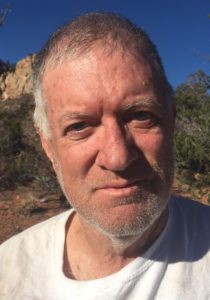
The backpack Jim was wearing must have partially cushioned his fall. When Lenny saw that Jim appeared to be OK, Canyon John said “Lenny, was like, ‘Dude, you stuck the landing. That was like a nine!’”
[Canyon John told me he thought Jim fell 15 feet vertically, maybe a little more. After looking that cliff over on the way back, I think he fell vertically about 20 feet; Jim thinks he fell about 25 feet. After more time passes, and this story gets retold a few times, Canyon John will be saying 25 feet, I’ll be saying 30 feet and Jim will be saying his parachute didn’t open.]
[Oh, yea, I fell too, once. It was a little, bitty fall, right before I got to the creek. Nothing to it, really, except for one thing — I rolled across a cactus.]
Will there be a next time?
Stick a fork in me, I’m done with the Nankoweap Trail. But Canyon John says he is going again, so he can hike from there to Kwagunt Creek, and I think Lenny and Jim and David will go with him in spite of any reservations anyone has now.
At first Lenny said he told himself, “There is no damn way in hell I’d do that trail again.” But after a couple of weeks, he said, he started thinking, “You know, that wasn’t so bad.”
“I’m kind of 50-50,” he said. “I’m not going to go out of my way to do it again,” but his “No” has become a “Maybe.”
Jim told me, “I would hike it again. Will I hike it again? I don’t know. I go where John goes.”
When I asked David if he wanted to hike the Nankoweap again he was clearly conflicted.
“The first time I did it [spring, 2016] I was absolutely, 100 percent sure one of us was going to die,” he said. “The second time [this time]… I was fearful that someone would die, but I didn’t have the [100 percent] confidence I did the first time.”
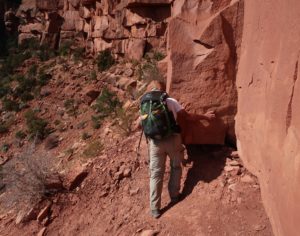
“I thought the trail was terrifying,” he said, especially the tightest place, where a bolder prevents you from leaning away from the abyss. “I hate that spot. I hate that spot!” he repeated.
So, do you want to go back or not?
“I guess the answer is, not really. But if John said, ‘Hey, I’m going to the Nankoweap,’ I’d go. I feel the pull of going back.”
NOTE1: I feel the pull too, David, but I’m determined to get over it.
NOTE2: Some good came from Jim’s fall off the cliff, a trail name. Lenny said Jim “stuck the landing;” he gave him a nine. So, henceforth, Jim will be known on the trail as “Nine!”
Coming Friday: Motivating With Money
![Lenny Frye [LtoR], Pat Stith, Jim McDonald, David McDonald, John Laneve](http://patstith.com/wp-content/uploads/2017/11/Group-shot-300x171.jpg)
